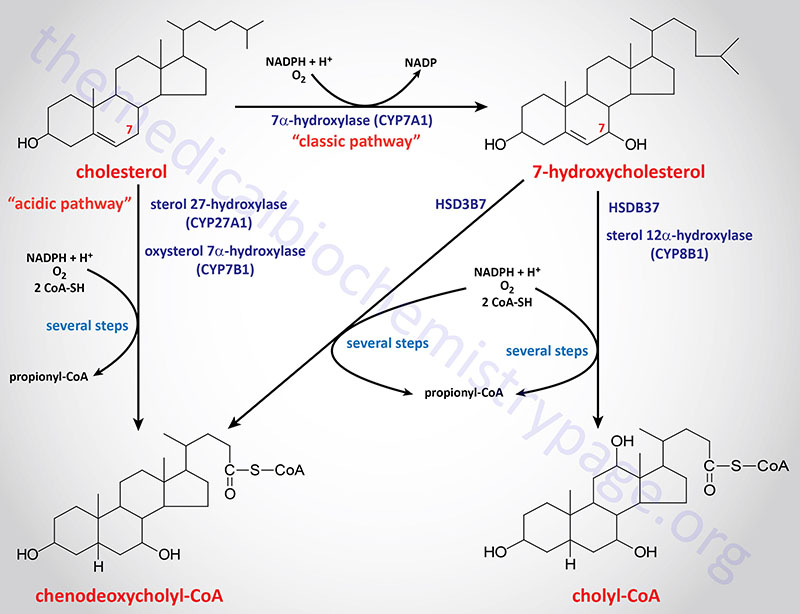Gene therapy for hemophilia represents a groundbreaking advancement in hemophilia treatment, offering hope to thousands affected by this bleeding disorder. Among the various forms of hemophilia, hemophilia B is particularly challenging for patients, as it involves a deficiency in clotting factor IX. Recent developments, such as the FDA-approved Hemgenix gene therapy, aim to address this deficiency by introducing the correct gene responsible for producing clotting factors. The benefits of gene therapy for hemophilia are multifaceted, potentially reducing or even eliminating the need for frequent injections and improving overall quality of life for patients. As more individuals explore the possibilities that gene therapy for hemophilia offers, the medical community is optimistic about transforming the landscape of hemophilia management and treatment.
Hemophilia, often described as a genetic bleeding disorder, affects individuals’ ability to clot blood properly, leading to frequent and potentially severe bleeding episodes. Treatments have historically revolved around regular infusions of clotting factors to manage symptoms, particularly for those suffering from hemophilia B, characterized by a lack of factor IX. However, the emergence of innovative therapies such as Hemgenix signals a new era where gene therapy offers a glimmer of hope for lasting solutions. By harnessing the principles of gene modification, this novel treatment introduces functional genes into patients’ cells, targeting the underlying cause of their condition. Patients may soon experience significant improvements in their health, moving beyond the limitations imposed by traditional prophylactic hemophilia treatments.
Understanding Gene Therapy for Hemophilia B
Gene therapy is revolutionizing the treatment landscape for various genetic disorders, notably hemophilia B. Hemophilia, a bleeding disorder caused by the deficiency of clotting factor IX, affects many individuals, particularly males, due to its location on the X chromosome. Traditional treatments involved regular injections of clotting factors, which while effective, often required lifelong management. However, gene therapy for hemophilia B, such as Hemgenix, offers an innovative solution. By introducing a correct copy of the factor IX gene directly into the liver, patients can potentially reduce or eliminate the need for continuous infusions.
The promise of gene therapy lies in its ability to address the root cause of hemophilia rather than just managing symptoms. Studies have shown that a significant majority of patients treated with Hemgenix no longer require factor IX prophylaxis after three years, marking a considerable shift in the management of this condition. This therapeutic approach not only improves patients’ quality of life by reducing their dependence on frequent injections but also offers long-term benefits that conventional therapies cannot match.
The Importance of Clotting Factor IX in Managing Hemophilia
Clotting factor IX plays a crucial role in blood coagulation; its absence or deficiency leads to hemophilia B, characterized by prolonged bleeding. Traditionally, treatment involved the administration of factor IX concentrates to prevent bleeding episodes. This method, while effective, requires careful monitoring and can be burdensome due to the frequency of injections that patients must endure. The rise of gene therapy has provided a new horizon in hemophilia treatment that might alleviate this burden, offering the potential for a more consistent and stable production of this essential clotting factor.
Gene therapy harnesses advanced biotechnological methods to deliver the gene that produces factor IX directly into a patient’s liver cells. Once introduced, these cells can begin to produce the factor IX protein, reducing the likelihood of bleeding episodes significantly. For patients like Terence Blue, this shift represents not just a clinical advancement but a profound change in lifestyle and wellbeing, allowing them greater freedom and reducing the anxiety associated with regular treatment.
Benefits of Gene Therapy in Hemophilia Treatment
The benefits of gene therapy for hemophilia treatment extend beyond mere convenience; they encompass substantial improvements in patient outcomes. One of the foremost advantages is the reduced need for ongoing infusions of clotting factors, which can be a significant relief for patients who have dedicated years to managing their condition with regular injections. Gene therapies, such as Hemgenix, have shown that patients can reach stable and effective levels of factor IX after just a single treatment, offering them a semblance of normalcy that was not previously possible.
Moreover, gene therapy has the potential to lower healthcare costs in the long run. Although the initial investment in gene therapy treatments can be substantial, as seen with the pricing of Hemgenix, the reduction in the need for ongoing treatment, hospital visits, and emergency care could ultimately lead to significant savings for both healthcare systems and patients. The transformative nature of this therapy paves the way for a future where individuals with hemophilia can enjoy a less restricted lifestyle and improved overall health without the constant worry of bleeding episodes.
Challenges in the Market for Gene Therapies
Despite the advancements facilitated by gene therapy, there are notable challenges associated with its implementation in the market for hemophilia treatments. One of the primary concerns is the cost associated with these new therapies, reflected in the high price tag of Hemgenix, which is approximately $3.5 million. This hefty price raises questions about accessibility, insurance coverage, and equitable access for patients, as many may struggle to justify or afford such expenses, even if the treatment promises long-term benefits.
Additionally, the market dynamics play a critical role in the sustainability of these innovative therapies. The withdrawal of certain therapies from the market, such as Pfizer’s Beqvez, highlights the potential pitfalls in patient and physician adoption rates, as well as the financial viability for drug manufacturers. For gene therapy to thrive, it’s essential for stakeholders to navigate these complex interactions between pricing, patient outcomes, and healthcare reimbursement policies effectively.
The Future of Hemophilia Treatment with Gene Therapy
Looking ahead, the future of hemophilia treatment through gene therapy appears optimistic but complex. As research continues to unveil the full potential of gene therapies, more innovative treatments are expected to emerge, potentially targeting a broader range of genetic bleeding disorders. The ongoing evolution of these therapies could lead to enhanced efficacy, reduced side effects, and more personalized treatment approaches that cater to individual patient needs.
Furthermore, ongoing studies and clinical trials will be vital in solidifying the efficacy and safety of new treatments. As pioneers in this field remain committed to pushing the boundaries of what’s possible in gene therapy, patients can maintain hope for a future where conditions like hemophilia may not just be managed but effectively treated, fostering a healthier, more active population previously burdened by the constraints of lifelong treatment.
Patient Perspectives on Gene Therapy for Hemophilia
From the patient perspective, the introduction of gene therapy has been both hopeful and transformative. For individuals like Terence Blue, undergoing treatment with Hemgenix symbolizes a significant shift in how they manage their condition. The prospect of reducing the number of injections and the associated anxiety of potential bleeding episodes offers a new lease on life. Patients report a newfound sense of freedom, which allows them to engage in activities they previously avoided due to the fear of bleeding.
Moreover, personal accounts from patients undergoing gene therapy provide invaluable insights into the real-world effects of these treatments. Many express optimism about their future, highlighting the psychological benefits of having fewer restrictions placed on their lifestyle. These compelling narratives reflect a shared anticipation among individuals living with hemophilia for a more liberated and healthier existence.
The Role of Research and Development in Advancing Gene Therapy
Research and development play a crucial role in advancing gene therapy options for hemophilia. The groundwork laid by scientists and medical professionals establishes the framework for innovative therapies, such as Hemgenix. As the understanding of the genetic underpinnings of hemophilia deepens, new approaches are being explored that may lead to even more effective treatments in the future. Collaborative efforts between research institutions, pharmaceutical companies, and regulatory bodies are essential to ensure that these developments translate efficiently from the lab to the clinical setting.
Furthermore, continuous research allows for the improvement of existing therapies, enhancing their safety profiles and patient outcomes. Ongoing studies not only seek to address current challenges but also open the door for the exploration of gene therapies targeting other forms of hemophilia and bleeding disorders. This collective pursuit of knowledge and innovation stands to significantly change the landscape for hemophilia treatment in the years to come.
Living with Hemophilia: The Impact of New Therapies
Living with hemophilia has traditionally involved a complex balance of treatment and lifestyle management. The advent of gene therapies like Hemgenix has shifted this paradigm, allowing individuals to experience a life with fewer medical interventions and greater freedom. Patients often report lower anxiety levels regarding potential bleeding events, which has a profound effect on their daily lives. As therapies continue to evolve, so too does the outlook for individuals managing this chronic condition.
Moreover, the introduction of these groundbreaking treatments encourages greater awareness and understanding of hemophilia among the general public. With increased visibility, there is an opportunity for improved social acceptance, reduced stigma, and a stronger support network for individuals living with the disorder. Ultimately, the impact of gene therapy extends beyond clinical outcomes; it fosters a newfound hope for an enriched and empowered life.
Healthcare Perspectives on Gene Therapy for Hemophilia
From a healthcare perspective, gene therapy represents a pivotal advancement in the management of hemophilia. As healthcare systems navigate the complexities of integrating these therapies, considerations surrounding cost-effectiveness, patient access, and long-term outcomes become paramount. The potential for gene therapy to significantly reduce the burden on healthcare resources presents opportunities for both improved patient care and optimized healthcare expenditures over time.
Moreover, healthcare providers play a fundamental role in educating patients about the benefits and limitations of gene therapies. By facilitating informed decision-making, providers empower patients to choose options that best align with their health goals and lifestyle preferences. In an era where personalized medicine is on the rise, the collaborative engagement between patients and healthcare teams will be essential in ensuring the success of gene therapy initiatives in hemophilia treatment.
Frequently Asked Questions
What is Hemgenix gene therapy for hemophilia B?
Hemgenix is a groundbreaking gene therapy designed specifically for hemophilia B, a genetic disorder that leads to insufficient production of clotting factor IX. This therapy utilizes a virus to deliver a corrected copy of the gene responsible for producing factor IX into the liver, enabling patients to potentially produce their own clotting factor and reducing their reliance on traditional hemophilia treatment.
How does gene therapy for hemophilia improve treatment outcomes compared to traditional methods?
Gene therapy for hemophilia offers significant benefits over traditional treatments by potentially reducing or eliminating the need for regular injections of clotting factors. By correcting the underlying genetic defect, therapies like Hemgenix can lead to sustained production of functional factor IX, improving patients’ quality of life and minimizing complications associated with hemophilia.
What are the benefits of gene therapy for hemophilia treatment?
The benefits of gene therapy for hemophilia treatment include a significant reduction in the frequency of bleeding episodes, decreased dependency on clotting factor infusions, and the potential for a more normal lifestyle without daily injections. Patients may experience long-term effects with improved clotting factor levels, making living with hemophilia easier and reducing the burden of maintaining a rigorous treatment regimen.
Is Hemgenix the only gene therapy available for hemophilia treatment?
As of now, Hemgenix is one of the primary gene therapies approved for hemophilia B, but it is not the only option being researched. The field of gene therapy is rapidly evolving, and there are ongoing studies for additional therapies targeting both hemophilia A and B, indicating a future with more treatment options for patients.
What should patients consider before undergoing gene therapy for hemophilia?
Patients considering gene therapy for hemophilia should discuss with their healthcare provider the potential risks and benefits, including the duration of effects, possible side effects, and the financial implications, as treatments like Hemgenix can be expensive. Understanding the therapy’s long-term impact on hemophilia management is crucial for informed decision-making.
How effective is gene therapy for hemophilia B in clinical trials?
Clinical trials for Hemgenix have shown promising results, with about 94% of treated patients not requiring factor IX prophylaxis three years post-treatment. This indicates a high level of effectiveness in sustaining factor IX production and significantly reducing bleeding episodes, showcasing the potential of gene therapy to transform hemophilia B management.
Are there any risks associated with gene therapy for hemophilia?
As with any medical treatment, gene therapy for hemophilia carries some risks. Potential side effects may include immune reactions to the viral vector and liver enzyme elevations. Patients should be monitored closely for any adverse effects during and after treatment to manage these risks effectively.
What advancements are being made in gene therapy for hemophilia?
Advancements in gene therapy for hemophilia include the development of more effective and targeted viral vectors, improved safety profiles, and ongoing research into new therapies. As the understanding of genetic disorders expands, researchers are optimistic about making further breakthroughs in treating hemophilia and other genetic conditions.
How has gene therapy changed the lives of patients with hemophilia?
Gene therapy has the potential to significantly change the lives of patients with hemophilia by offering them a more stable and less burdensome approach to disease management. Patients may experience fewer bleeding episodes and reduced dependence on regular infusions, enhancing their overall quality of life and allowing them to engage in activities they previously avoided due to their condition.
What is the cost of hemophilia gene therapy like Hemgenix?
The cost of hemophilia gene therapy, such as Hemgenix, can be extremely high, with a list price around $3.5 million. However, insurance negotiations often lead to lower prices. Patients and families should discuss coverage options with their healthcare providers to manage these financial aspects.
| Key Point | Details |
|---|---|
| Introduction of Gene Therapy for Hemophilia, | Terence Blue became the first patient in New England to receive the FDA-approved gene therapy Hemgenix at Brigham and Women’s Hospital. |
| Importance of Clotting Factors, | Patients like Blue require regular injections of clotting factors to stop bleeding since their blood lacks the necessary components. |
| Market Challenges, | New gene therapies face high costs (e.g., Hemgenix lists for $3.5 million), market pressures, and varying patient acceptance. |
| Treatment Process, | Hemgenix uses a virus to deliver a corrected gene to the liver, enabling the body to produce its own clotting factor IX. |
| Promising Results, | Clinical trial data shows 94% of treated patients do not require further factor IX injections after three years. |
Summary
Gene therapy for hemophilia is revolutionizing treatment options for patients, as demonstrated by Terence Blue’s groundbreaking experience with Hemgenix. This innovative therapy has the potential to significantly reduce or eliminate the need for lifelong injections of clotting factors, enhancing the quality of life for those affected by hemophilia B. As research continues and more therapies emerge, the hope for a future where patients can live without the constant worry of bleeding episodes becomes increasingly realistic.



